by Sarra Zoghlami
For mold designers who would like to use SimForm to compare different cooling designs.
Introduction
SimForm allows running thermal analysis for mold designs with simple and complex cooling channels. You can use SimForm to compare the cooling performance of different channel circuits and choose the most effective cooling method for your mold at an early stage of the design cycle which helps you optimize the cooling process and reduce the injection molding cycle time.
In this article, SimForm is used to run an analysis of a conventional cooling design and a conformal cooling design for the same plastic part to compare the temperature results and analyze the efficiency of the two approaches. To learn about how to use SimForm to run thermal analysis, follow the step-by-step guide Mold Cooling Thermal Analysis Using Basic Channels.
Content
SimForm lets you analyze detailed mold designs that contain multiple components and mechanisms, as well as simple designs with the plastic part and a single box around it.
In this example, we analyze an All-Terrain Vehicle (ATV) grill mold using two different cooling approaches. First model contains conventional cooling channels with baffles, a plastic part, a mold core, and cavity. Baffle locations were determined according to the results where we run a thermal analysis of the same mold with parallel straight cooling channels. Based on the temperature distribution in the mold and the safe ejection time, we added baffles only on those areas of the mold that cannot be cooled effectively by basic cooling channels. This allows avoiding overcooling and additional manufacturing cost of adding unnecessary baffles. In the second conformal cooling model, we added inserts containing cooling channels that follow the plastic part geometry.
| Conventional cooling model | Conformal cooling model |
|---|---|
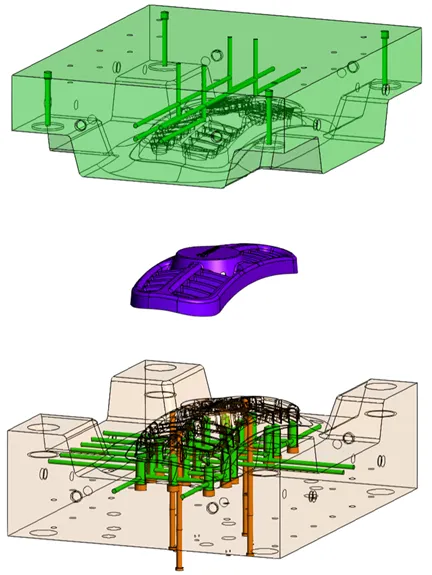 | 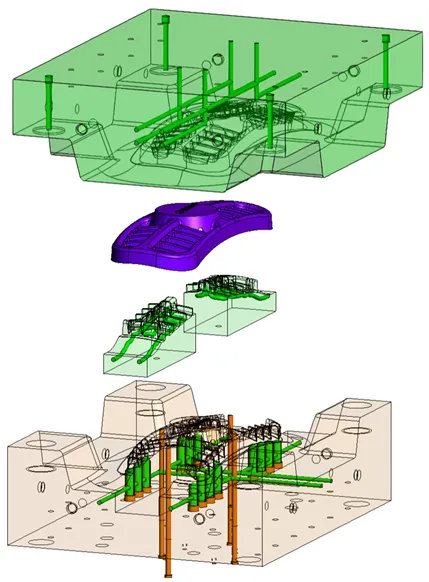 |
Running the models with different cooling in Simform is easy and lets you compare the temperature distribution in the mold components, and in the plastic part to identify high temperature and over-cooled areas. You can also compare the overall and local freeze time which is time required for the plastic part to develop a frozen layer thick enough for the part to be safely ejected. Choosing the cooling method with the most effective overall freeze time, reduces the molding cycle and decreases the production cost.
In this table, we compare the results for conventional and conformal cooling to evaluate the impact of the cooling channels design on the temperature distribution of the mold and the molding cycle time.
| Conventional cooling | Conformal cooling | |
|---|---|---|
| Overall freeze time | 74.8 s | 59.7 s |
| Local freeze time | 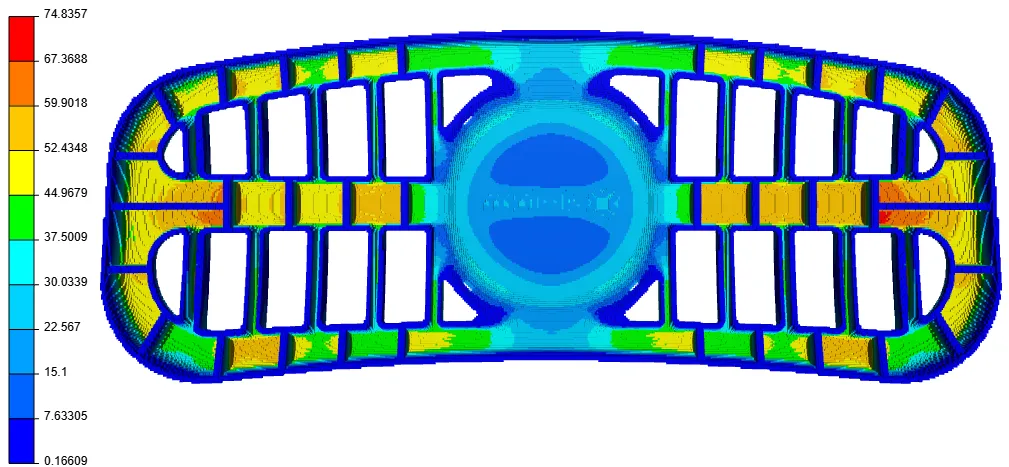 | 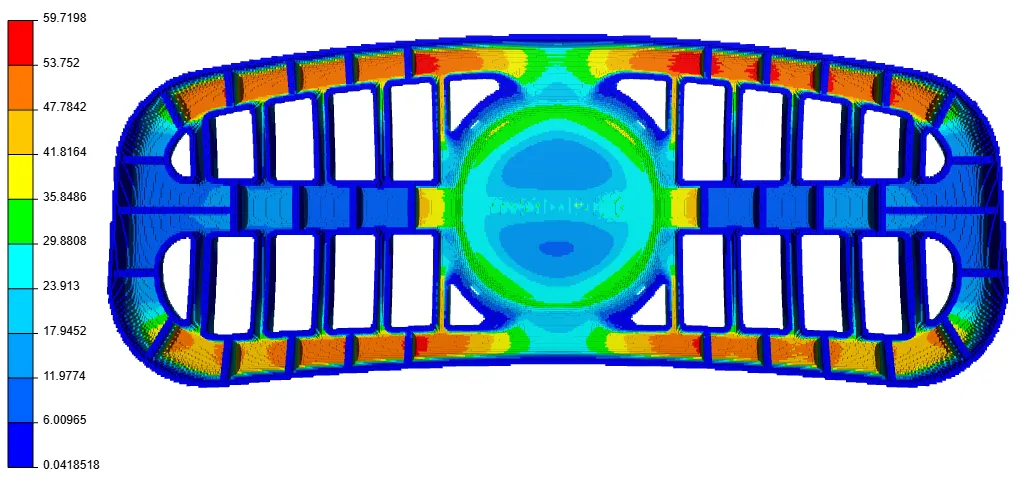 |
| Plastic part temperature | 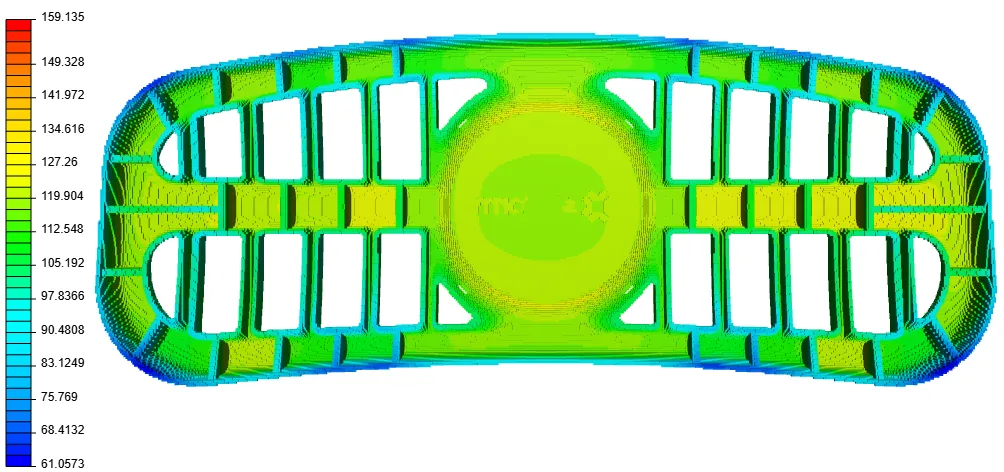 | 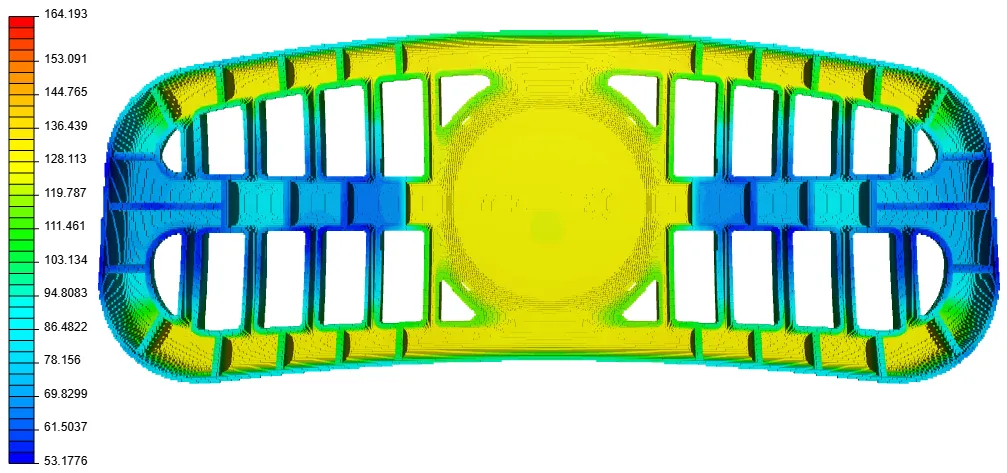 |
| Mold temperature | 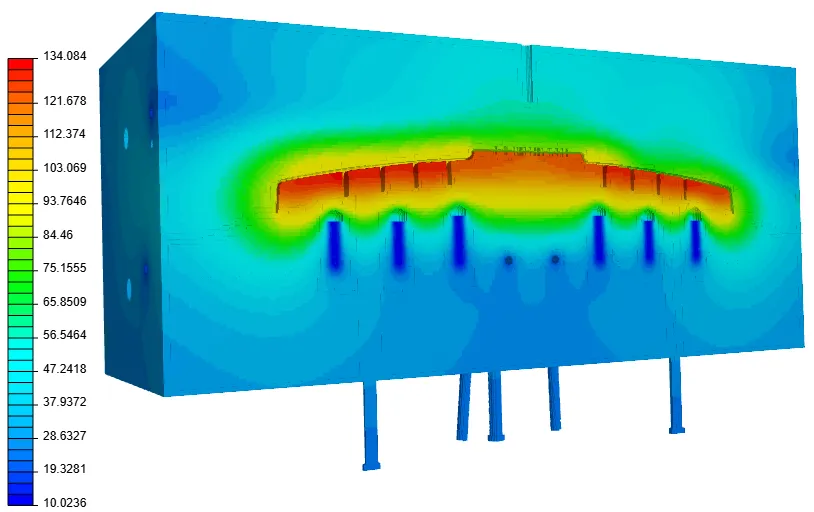 | 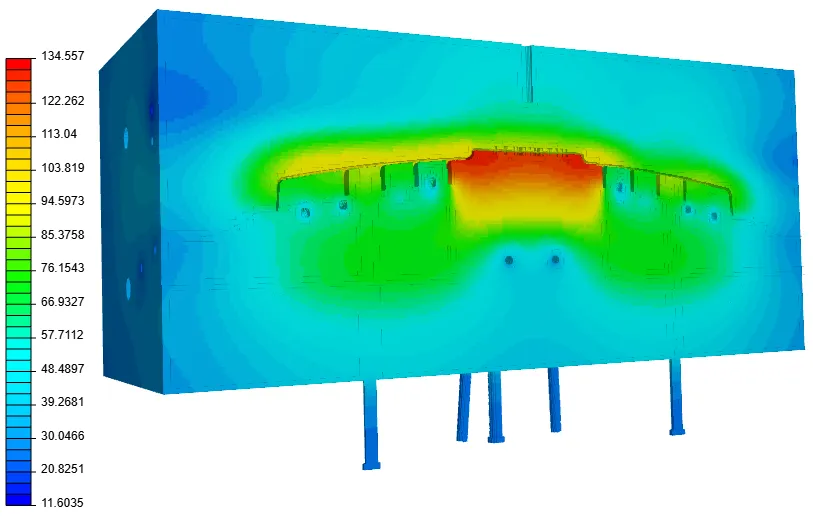 |
The comparison between the conventional cooling and the basic cooling results show that adding baffles, to redirect the flow to the areas that need more cooling, reduces the temperature of the mold near to the plastic part and reduces the overall freeze time. The local freeze time is highest in the central area of the part.
In the conformal cooling model, the temperature distribution in the mold is more uniform and has smaller values near to the plastic part in comparison with conventional cooling. In addition, the conformal cooling inserts help to reduce the temperature and the freeze time in the grill central areas. Hence, the conformal cooling effectively reduces the temperature in the mold and the plastic part pockets and provides a smaller freeze time. However, because of the conformal insert, the mold is more expensive to manufacture.
Conclusion
In this article, SimForm is used to compare two different cooling methods: conventional and conformal cooling. The channel design and location used in the molds were based on results from the channel planner and basic cooling analysis. SimForm provides quantitative results that let you compare and choose the most optimal cooling method for the mold design. You can use SimForm to conduct preliminary analysis of different mold designs and use the temperature distribution results to evaluate the thermal performance of the cooling channels and compare the freeze time to the molder target cooling time. SimForm allows you to test different mold designs to ensure that your design optimize the cooling process while minimizing the manufacturing costs and that your final design meets all the requirements.
SimForm enables you to build robust business cases for new mold designs. While it is not difficult to have a cost estimate for the additively manufactured inserts, it is hard to get an evaluation of the cycle time improvement without running an expensive mold flow simulation. SimForm helps you estimate how much faster conformal cooling inserts will cool your mold and help you decide if it is worth it.